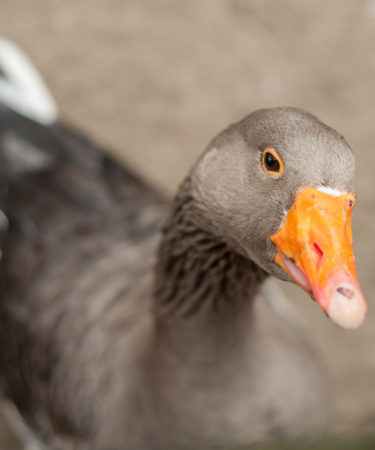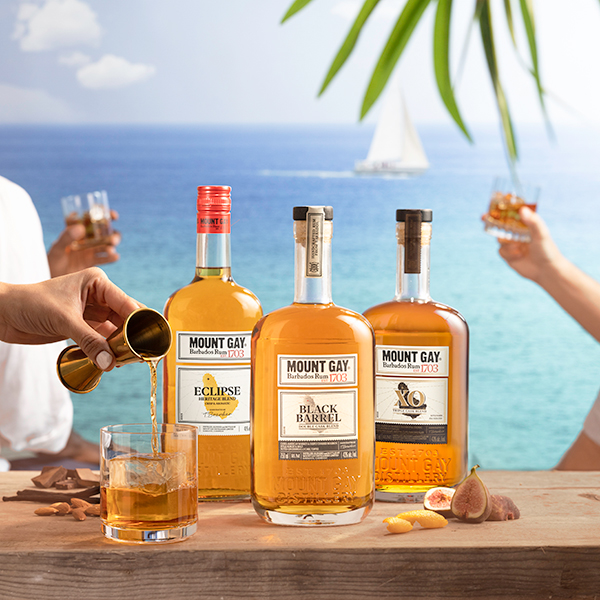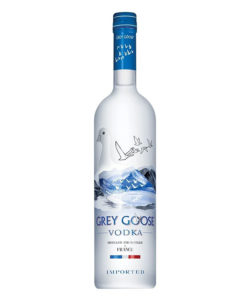
It’s hard to know a ton about vodka, though even if you don’t we’re pretty sure you’ve heard of Grey Goose. The stuff is clear. The stuff is odorless. The stuff is (technically) flavorless. But then plenty of vodka producers think there is plenty for all of us to know about their particular vodkas, from the origin of the fermented starch (which is eventually stripped of most of its character) to the way it should be served, what with, etc.
And we agree, there’s actually plenty more to know about vodka. Maybe the most approachable way to learn about the beverage is brand by brand, since vodka could quite easily meld into one high ABV, low differential subcategory of intoxicant.
Truth is, most of what we do know about vodka is brand. Whether or not textural or even aromatic differences actually exist vodka to vodka, the major selling points are still currently cultural: college plonk, authentically Eastern European, or—and this is where it gets confusing—“premium.” Grey Goose is in that last category, kind of one of the creators of that last category, actually. And before you go shell out “premium” cash for it, soak in a couple of factoids about one of the strongest, and most confusing, brands in vodka history.
Grey Goose wasn’t born in France.
The “French” vodka—which, to be fair, is currently produced in France—was the brainchild of an American businessman, Sidney Frank, founder of the Sidney Frank Importing Company and (eventual) self-made billionaire.
Jäger and Grey Goose are step brothers.
Sidney Frank, the same guy behind the “Grey Goose” concept, started his importing company in 1972. Among his first product successes? Jägermeister. It wasn’t overnight, but Frank saw some promise in the stuff, and by the mid ‘80s, so did college kids. With a little help from a squadron of liquor ladies dubbed the “Jägerettes,” Frank brought us all the pleasure of knocking back shots of a rich, dark German liqueur in far too large a quantity. (So, thanks?)
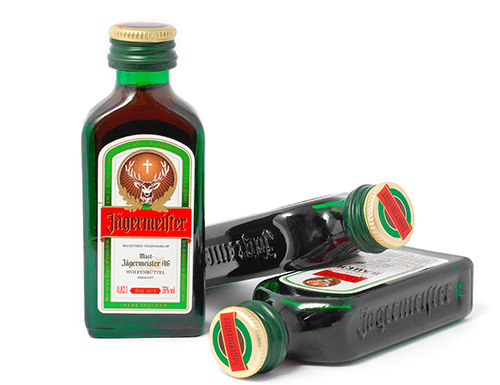
The name Grey Goose comes from a German white wine.
Frank had been importing it, and found the name resonated with customers. When he wanted to make his foray into the “premium” vodka world, he had the name on the tip of his tongue…
Brand before bottle.
Before a single drop of Grey Goose had been distilled, the brand was already in the works. Frank had actually come up with the name first, and the rest—including the actual vodka—followed.
The idea behind Grey Goose was specifically “luxury.”
There wasn’t a particular recipe or method that drove the creation of Grey Goose. Frank simply saw a gap in the beverage market: “high end” vodka.
Grey Goose is more like Grey Gosling.
Grey Goose might have a classic air about it, but it was actually invented in 1996. Still, we think Goslings can be plenty mature…

Absolut Competitor.
Part of the reason Frank invented Grey Goose was that he saw the success of the Absolut brand, which was high priced for its time (and had all those sleek, funky ads), and realized he could do one better. How to out-luxury the current luxury brand? Raise the price. That’s it. Raise the price to the then-astronomical $30 a bottle.
A Less Hackman-y French Connection.
Grey Goose is distilled in France—in Picardy—but not because of any specific regional interest. Vodka, remember, is all about stripping alcohol of most of its congeners and funky flavor compounds. You could do that pretty much anywhere. But Frank wanted something specifically against tradition—as in not Eastern Europe. He wanted a vodka American consumers would immediately associate with luxury. And berets.
There is some special Frenchiness to it.
The wheat for Grey Goose is grown in Picardy and distilled there, before being sent to Cognac — which we admit is super French — for filtration. And then there’s the fact that the water it’s made with is filtered through limestone from the Champagne region. So that’s a bit of French street cred, sure.
Grey Goose is a lot like Wheaties.
As in being wheat-based. Not really the breakfast of champions. Vodka can be made from pretty much any reliable starch source—and the base material won’t matter as much (despite what people say) since vodka is specifically distilled to be essentially odorless and tasteless. That said, Grey Goose is made with soft winter wheat, grown in France (of course), and presumably better for distilling.
It takes no fewer than five column stills to make Grey Goose.
The vodka, like most vodkas, only happens after some through, careful distillation (stripping away congeners, purifying, rectifying, all that jazz). And the distilling plant, in Picardy, uses 5 column stills, not to mention not entirely de-mineralized water (for character), for this purpose.
The Frenchness doesn’t stop. (Can’t stop, won’t stop.)
Even the fruit used to make Grey Goose’s fruit flavors—Le Melon, Cherry Noir, La Poire, for example—are grown in France. If Frank wanted a French luxury brand he could charge almost double the normal price for, at least the process is faithfully “French.”
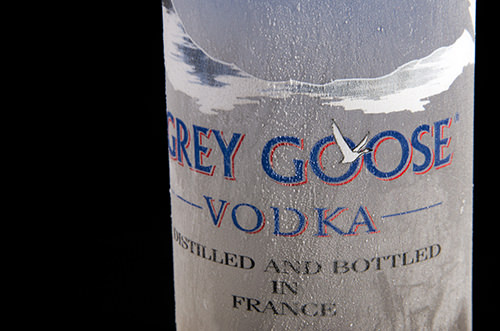
Grey Goose got some bad glycerol rumors behind it.
At least one test seems to suggest there is absolutely no glycerol in Grey Goose. And just to catch you (and us) up, glycerol can—though is not often—used to add viscosity to vodkas. And yes, it is the same stuff they use in anti-freeze. (Dan Aykroyd, aka Ray Stantz, makes a point of differentiating his Crystal Skull based on this.)
Bacardi paid a pretty penny for the Goose that laid the Golden Egg.
Frank’s gamble at brand-before-booze was very successful. Hugely, in fact, since the Grey Goose label was sold to Bacardi in 2004—just 7 years into its product life cycle. The selling price? About $2 billion. All for a liquor that is technically (if highly secretively) defined by its colorless, flavorless, odorless “purity.”
Young Jeezy loves Grey Goose. (And does he know you?)
Young Jeezy actually composed a song called “Grey Goose,” which you can listen to here bearing in mind there’s some possibly offensive language. Basically, drinking Grey Goose either makes you super forgetful, or means you’re next level when everyone else is basically…previous level. Or whatever.
Jagermeister image via cristi180884 / Shutterstock.com
Grey Goose Bottle image via gmstockstudio / Shutterstock.com
